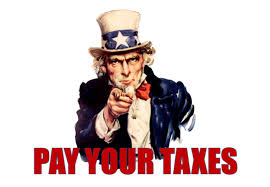Payments on account due by 31 July 2018
- July 30, 2018
- Posted by: admin
- Category: Contractors, Expenses, Tax, Uncategorized

The second payment on account for the 2017-18 tax year is due to be paid to HMRC by 31 July 2018 – the first payment on account was due by 31 January 2018.
Your payments on account are advance payments made towards your personal tax for each tax year.
How much you have to pay is based on your previous years tax return, so your 2017-18 payments on account are based on your 2016-17 tax return.
If 2017-18 is your first year in self assessment then you would not have any payments on account to make until 2019.
Everyone has to make payments on account unless:
- your previous tax return tax bill was less than £1,000; or
- you’ve already paid more than 80% of all the tax you owe for the year – e.g. if you are in employment then you already pay tax through your tax code (your employer will deduct tax on your behalf and pay it to HMRC)
Example of payments on account
Lets look at an example of a payment on account for a self employed freelancer with no other sources of income.
Joy started self employment in 2016-17 and this was the first year that she was in the self assessment tax return system.
Joy’s tax return for 2016-17 showed that her tax due for the year was £8,000.
She would have had to pay this tax to HMRC by 31 January 2018.
On top of this she would have had to pay 50% of the £8,000 as a payment on account for the 2017-18 tax year, also due by 31 January 2018, bringing her total tax payment due by 31 January 2018 to £12,000.
She would then have to make a second payment on account to HMRC for the 2017-18 tax year by 31 July 2018, this would also be 50% of the 2016-17 tax which is £4,000.
When it comes to actually preparing and filing her personal tax return for 2017-18 these payments on account will be factored in and will reduce her payment due for the tax year, the final balancing payment being due by 31 January 2019 – although she will then have to make payments on account for the 2018-19 tax year.
It might make things simpler to look at the dates below and what they mean:
- 31 January 2018
- balancing payment for 2016-17; and
- first payment on account for 2017-18
- 31 July 2018
- second payment on account for 2017-18
- 31 January 2019
- balancing payment for 2017-18
- first payment on account for 2018-19
- 31 July 2019
- second payment on account for 2018-19
What else is included in the payments on account?
It is not just tax that has to be included in the payments on account calculation, but for the self employed it also includes class 4 national insurance.
However class 2 national insurance, student loan repayments and capital gains are not included in payments on account.
Can you reduce your payments on account?
If your tax estimate for the new tax year is lower than the previous year then you can reduce your payments on account when you do your tax return.
For example, you may be a freelancer who is going back to employment.
Be aware when considering this that if you are to reduce your payments on account and it turns out that you did indeed have the tax to pay then HMRC would re-instate them when you filed your tax return and charge interest on the basis of late payments of tax.
Source: JF Financial
